Ballad of Lee / Grant tanks. "Lee / Grants" in battle (part four)
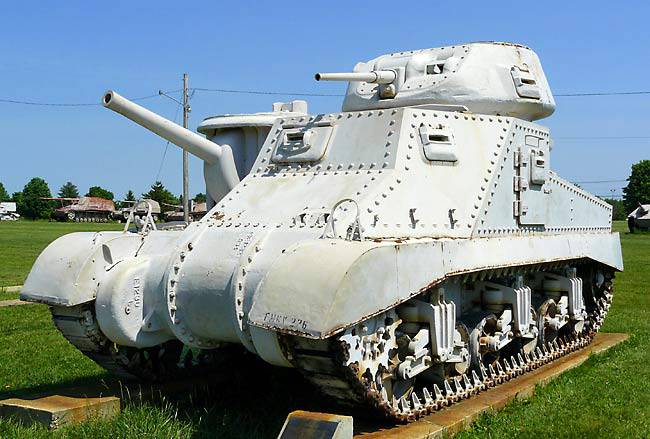
For some reason, the “tank mile” of the Aberdeen M3 testing ground is still painted like this ... In any case, there are no more recent photos.
For example, a French tank B-lbis with an 75-mm short gun that had a similar weapon set between the tracks in the hull to the right of the driver was already bad because its crew’s functions were not efficiently distributed (there was only one person in the tower) and the gun was short-barreled, and the driver himself directed her to the target. True, we had a HF-2 with a 152-mm cannon in a huge turret. But it was not a medium tank. It was a heavy tank, and you can’t compare it with the M3. How can you not compare the "Tiger" and T-34.
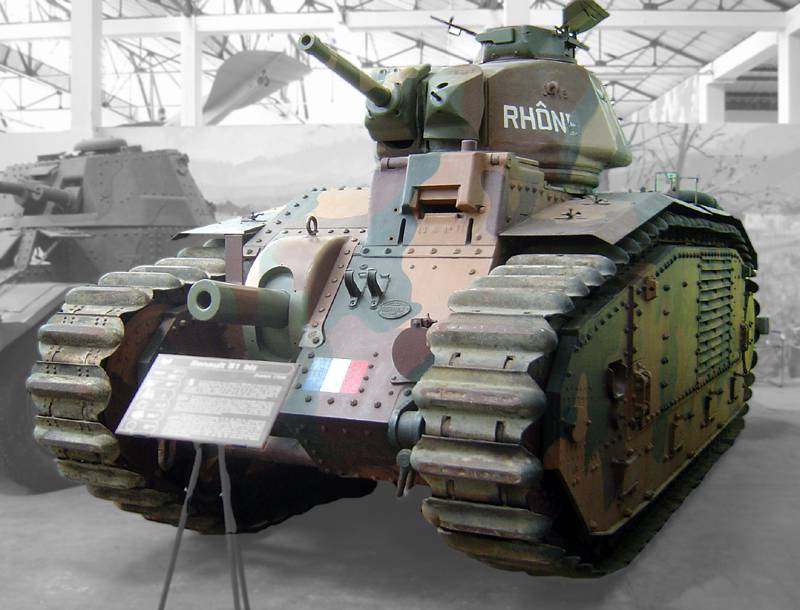
Well, what can you destroy here from such a pathetic 75-mm gun? B1bis, Samyur, France.
The armament of the Lee / Grant М3 tanks allowed them in those years to fight on an equal footing with the tanks of fascist Germany and its allies of all types. The 37-mm gun that was in the turret hit their armor at a distance of 500 yards (457 m), and with a thickness of 48 mm, while the 75-mm gun that stood in the sponsor punched 65 mm armor, that is, thicker than it was on the German tanks, and even had 30 degrees of inclination to the vertical. But which German tank in those years had such armor? It is worth noting that the 76-mm cannon of a Soviet XVUMX heavy tank, at a distance of 500 m, could penetrate 69 mm thick armor, and thus, comparing the capabilities of these machines in the fight against German tanks, it can be said that they were almost equal.
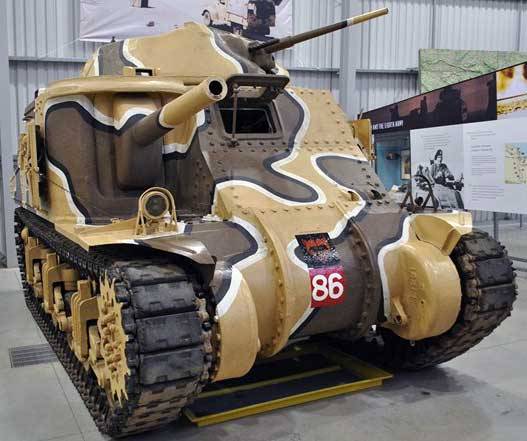
М3 "General Grant" in the museum in Bovington.
German tank guns, which had a caliber 37-50 mm, and even more short-barreled 75-mm gun SAU "StuG Ш", which we have the name "Artsturm", could not penetrate the frontal two-inch armor M3 with 500 m. And also its 37- mm gun had such an angle of elevation that it was even possible to shoot at aircraft, because of which the tank received "own air defense", and not at all "machine-gun quality." The large size of the tank also had a strong impact on the psyche of the enemy, which was especially evident in the Pacific theater and in Asia. True, they also made it noticeable and, accordingly, more affected. Thus, the main drawbacks of the M3 tank were ... three! The first is a great height. The second is a weak engine for such a mass. The third is the difficulty of maneuvering fire with a weapon of the main caliber, and ... everything!
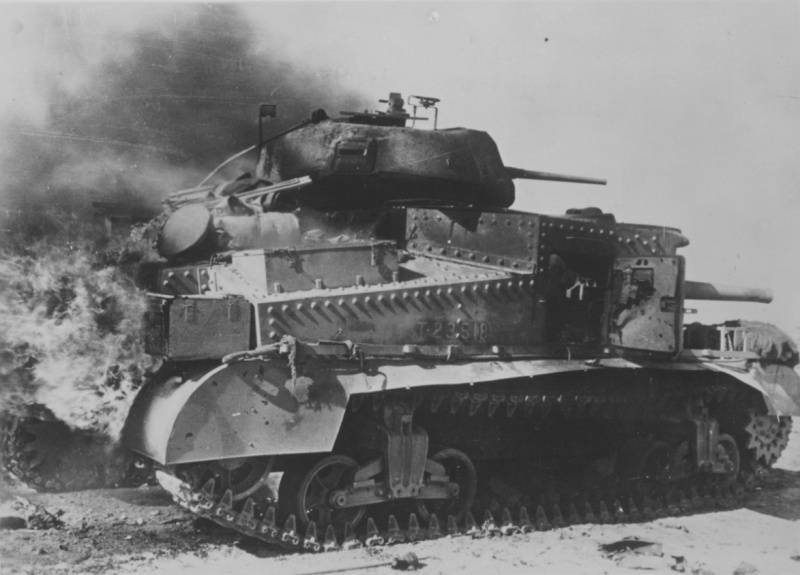
Burning M3 in Libya. "In war, as in war."
The first military service began tanks M3 "defense channel": "General Grant CDL" and "Shop Tractor T 10". Were in the 79-th armored division of Great Britain, and together with the tanks "Matilda CDL" were supposed to reflect the German troops. The division was on the shores of the English Channel, all its tanks were in full combat readiness and were strictly classified. But the Germans did not land the landing. Therefore, the baptism of the battle M3 received in the sands of sultry Africa.
But this tank became a German trophy.
Here in January 1942, the German and Italian troops commanded by E. Rommel's desert foxes began to attack the British army 8 in Libya and were able to push it away from the city of Benghazi to the city of Ghazal. After that, the front stabilized here for four long months. Then the British struck back and almost crushed the enemy, but the pace of their attack was very low - only 1,5 km per ... day. As a result, only in mid-February, British troops were able to reach the Libyan-Tunisian border.
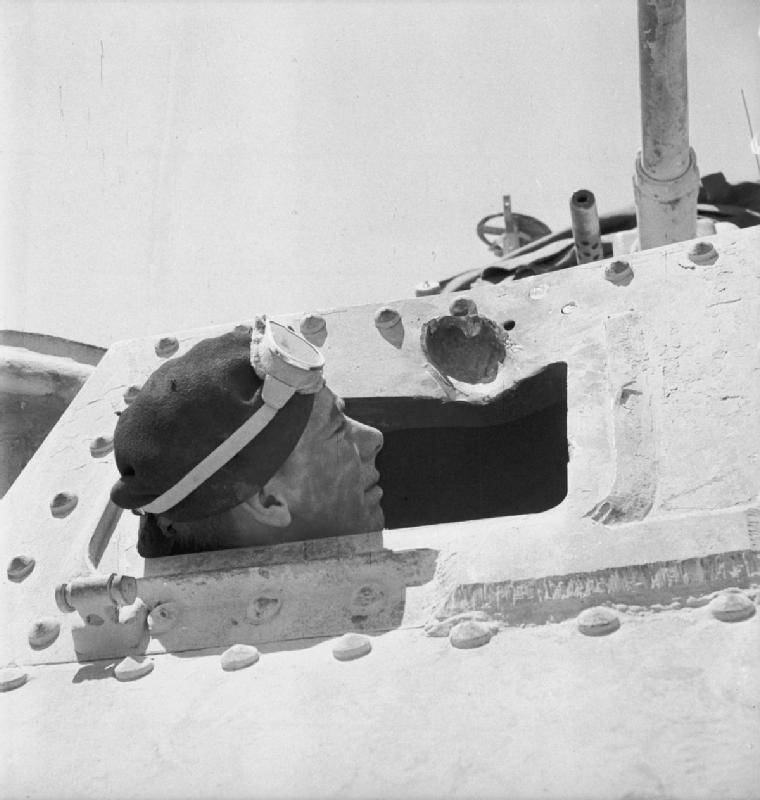
This tank German projectile landed right on the edge of the driver's viewing hatch, but ... armor did not penetrate!
Then, in November – December 1942, Anglo-American troops, almost without resistance, occupied North Africa, which was under the rule of the Vichy government.
Fierce fighting began in the spring, but only by 13 in May the Germans were defeated, and despite the fact that the Allies had a double superiority in the infantry, three times superior to them in artillery, and in tanks - four times! They also had a well-established and uninterrupted supply of their troops with everything they needed. The losses of the German-Italian troops were very large. So, they had all 120 tanks, while the Allies had 1100 vehicles in stock.
If you overclock a tank and build a springboard, then ... any tank can be turned into a “flying one”. The case of technology!
In these battles, the superiority of the M4 Sherman tanks to the M3 manifested itself radically. Therefore, the M3 tanks in the armies of Great Britain and the USA began to be removed from service and transferred to their allies - first of all, countries such as India, Australia and New Zealand, as well as French and Polish military units that were in the UK. Those vehicles that still remained in the military were converted into various auxiliary combat vehicles: command tanks, trawling tanks, repair and recovery vehicles, and in this form they were used until the very middle of the 50's.
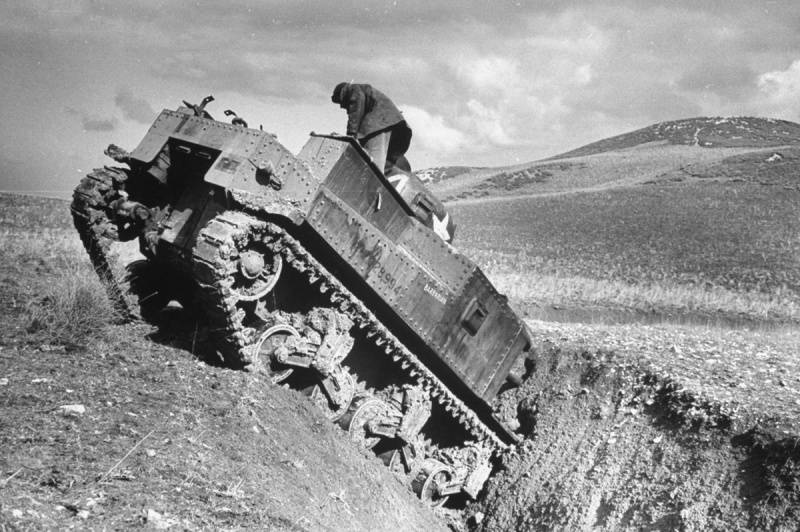
Stuck in a ditch in Tunisia ...
During the landing operation in Normandy and in the south of France, the Anglo-American troops were armed with the newest tanks, but the M3 tanks were still used in the French and Polish divisions that fought as part of the allied forces. The strength of the French, who acted as part of the US 7 Army near Strasbourg during the German counteroffensive in the Ardennes and the Polish tank crews of the tank division in the Lower Meuse region, helped to contain the German tanks, and, in fact, saved the American 7 Army from defeat.
What distinguishes the "white man" from the black? Only one thing - the presence of a white ass!
In India, tank forces began to form from May 1 of the year 1941. Their basis was made by the American light tanks M3 "Stewart", which were supplied to the Indian army under lend-lease. From 1943, M3 also went into battle in the jungle of Burma. Here the massive use of tanks, as in the Libyan Desert, turned out to be impossible. Therefore, they acted in small groups, or even singly, solely in order to support the infantry, which often had to fight on mules, local buffaloes and even elephants.
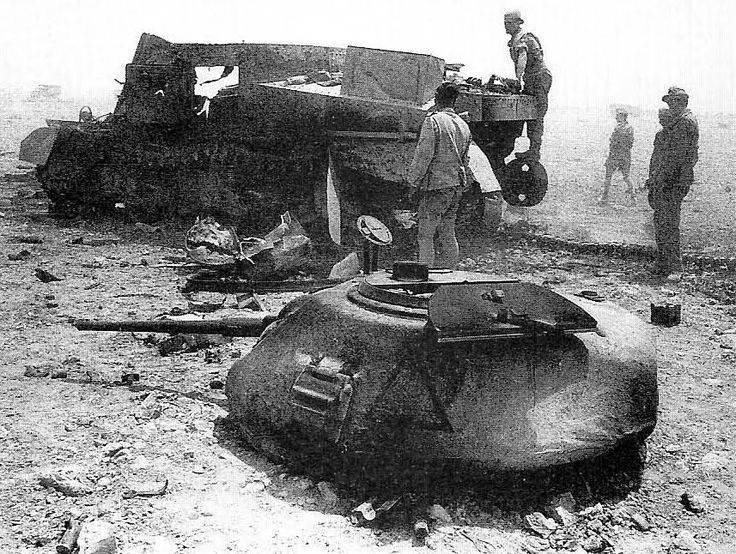
When ammunition exploded in the M3, something like this happened to the tank ...
In the desert, the M3 performed quite well. True, the caterpillars had to close the dust panels, because otherwise it is very much "dusty". However, he was “dusty” with shields, but still less. German tanks from afar marveled at them from the first shot, in addition, the M3 developed a strong demoralizing fire on the infantry. But the German 88-mm anti-aircraft gun struck him with the very first shot, as well as the captured Soviet F-22 and USV guns with bore chambers, and the 251 BTR mounted on the chassis. He could not fight on equal terms with the newest German T-IV tanks with long-barreled 75-mm guns in 42 and 48 calibers.
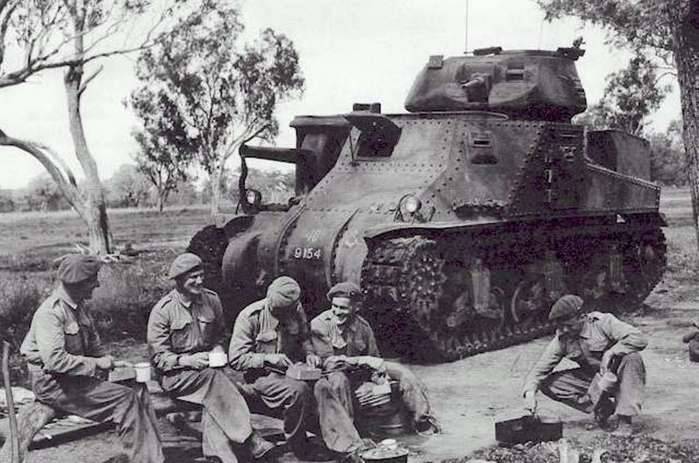
Australian tank crews study the M3. Photo 1942 of the year.
But in Burma, the M3 tank showed its best side. Japanese tanks, armed with 37 mm cannons, could not hit their frontal armor from a distance of 500 meters, but they themselves were easy prey for the 75 mm guns of General Lee. The Japanese army did not have high-quality anti-tank guns. In the infantry, suicide squads were created to fight them, which, tied with bags of dynamite, with mines in their hands or bottles with combustible mixtures in their hands, threw themselves under these tanks, or hid in the thicket and tried to put mines under the tanks using bamboo poles. Tankers replied that they began to put infantry on their vehicles, and then the Japanese began to use against them Aviation. To this end, the Ki-44-II “Otsu” fighters were armed with two 40-mm Ha-301 guns instead of the standard 20-mm guns mounted in the wing. Two 12,7 mm machine guns on them were saved. They used these machines as attack aircraft, but the ammunition for the guns was scanty: only 10 shells per barrel. The 64th Air Force Regiment of the Imperial Army of Japan, commanded by Major Yasukho Kuroe, fought on these aircraft.
As for self-propelled 105-mm howitzers М7 "Priest" on the basis of М3, also very well showed themselves in the Libyan desert, being in the composition of the 8 of the British army. Then they entered into service with the British, American, and French armies, and they were used to support infantry in battles in Sicily, in Italy and in northern Europe. These M7 howitzers were in service in many armies of the world until the middle of the 50s.
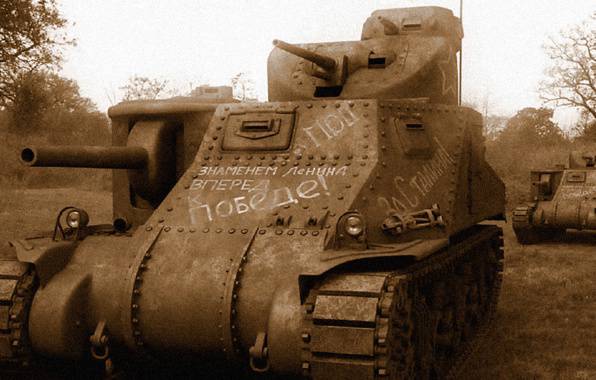
“Under the banner of Lenin, forward to victory! For Stalin! ”- immediately visible - our tank.
The command and control vehicles of the M3 tanks began to be redone in 1943. At the same time, the armament and both units were dismantled - in the case and in the tower (the latter along with the upper tower), after which a sufficiently large free compartment could be equipped inside the machine, in which a powerful radio station and various other equipment were installed - that is, everything that was needed staff work. Externally, these cars were like the ARV-1, and had neither guns nor towers. However, in the US Army, the tower with the 37-mm gun was left on them. These "tanks" were used by the commanders of tank regiments and divisions, and on them there could also be operational groups of headquarters of tank divisions. The number of converted cars was small.
Obviously, this part included both M3 and M3 (according to the Soviet classification).
Repair and recovery vehicles ARV were in service with special units and operated in the second echelon of existing tank units. Their task was the repair and evacuation of tanks that had received some damage. But on the Western Front, tank battles similar to those in Russia had practically no place. By virtue of this, ARVs were applied rather limitedly.
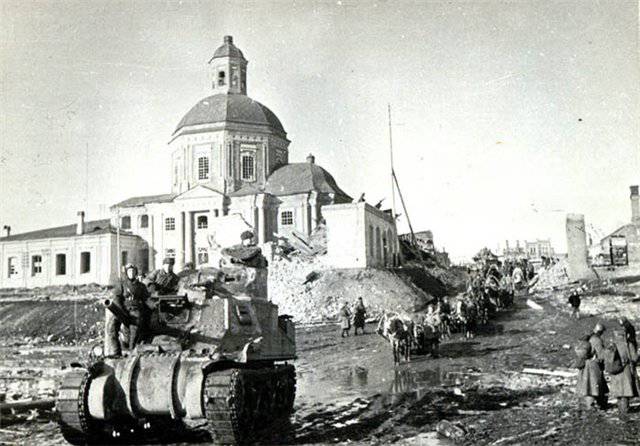
Soviet M3 under Vyazma. 1942 year.
The Kangaroo armored personnel carrier was designed specifically for the transportation of infantry after the advancing tanks. These machines gave the English armored divisions operating in Europe. But their combat use was episodic. For a while these armored personnel carriers after the war were in the service of the Australian army.
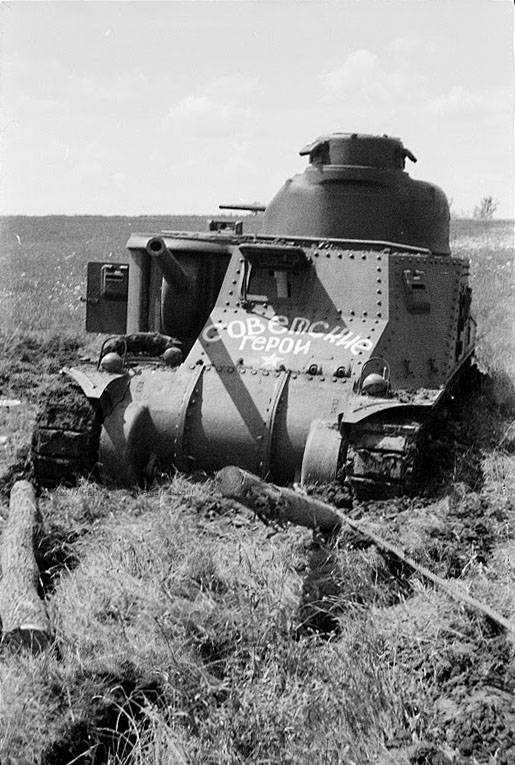
“Modesty is like underwear,” say the French. “It is necessary to have, but you shouldn’t show it to everyone!” The padded tank М3 “Li” “Soviet heroes” in the area of Bliznovsky-Kabala (north of Bolkhov, Orel region) July 1942. Most likely, this tank belonged to 192 TB (61 army). So the tankers from this tank arrived "according to the French recipe." But ... isn't it a real heroism, to fight in such a terrible war, and even on such a tank?
As for the USSR, the M3 tanks were met without enthusiasm. The fact is that in the middle of 1942, Germany had already begun to produce T-IIIJ and T-IIlL tanks with 50-mm armor and, moreover, armed with long-barreled 50-mm gun, piercing armor up to 500 mm at a distance of 75 m, and also began to produce the T-IVF tank and the “StuG III” assault gun, which also had a long-barreled 75-mm gun with high efficiency. So, the M3 armor has already ceased to be saved. Speed was required, but also maneuverability and secrecy, and all these qualities of the M3 were absent. High, with poor maneuverability on Russian roads, with an insufficiently powerful engine (power 340 hp against 500 hp in T-34 of the same mass) and very sensitive to the quality of fuel and lubrication, it did not cause good feedback from tank crews. But these shortcomings would still be tolerable if it were not for its rubber-metal tracks. The tires on them often burned out, and the tracks simply fell apart, and the tank turned into a fixed target. And it is clear that tankers did not like this. Mitigate their opinion about the tank could neither comfortable conditions of its operation and maintenance, nor convenient side doors, which made it possible to easily get out of the damaged car, nor its strong armament. The report of the commander 134 of the tank regiment of Colonel Tikhonchuk from 14 of December 1942 of the year in which he assesses the М3 tanks is well-known: When firing at enemy tanks, due to the fact that the 75-mm gun is installed in the mask, and not in the turret, you have to deploy the tank, which is buried in the sand, which makes fire very difficult. ”
In the American army there were such mixed units, where along with the new M4, the M3 veterans also fought. True ... not for long.
Here, however, it should be noted that neither the British nor the Americans did not use the M3 as intensively as in the Red Army, and the heat of fighting both in Africa and on the Western Front was very far from everything that happened Eastern front.
However, the shortcomings of the M3 allies were fully realized and therefore very quickly removed them from production. From August 1942, the USA began to produce the M4 “Sherman” tank, and in England - the Mk VIII “Cromwell”. It was a “one-day tank”, and when that day passed, the well-developed US industry ... supplied the army with a new tank. Reserves for modernization МХNUMX were absent from the beginning!
Interestingly, exactly the same fate befell our domestic supertank KV. He was invulnerable in 1941, but he was no longer satisfied with the military in 1942, primarily because of his driving characteristics. To improve the maneuvering qualities of the KV tank, its designers decided to even go on ... reducing the thickness of armor on it, and this despite the fact that 75 mm armor had already penetrated German projectiles by this time !!!
Under the Lend-Lease of the USSR, tanks of such modifications as MZAZ and MZA5, which had diesel engines, received. In total, we were supplied with something near 300 machines: the northern route - by sea through Murmansk, and the southern route - through Iran.
Another Soviet M3.
It was not particularly customary to write about the actions of the American M3 tanks in the Red Army, so as not to praise the technique of our ideological adversary. But in the 5 volume of The History of the Second World War, published in 1975, there is a photo showing the tank attack of the Soviet MZAZ Grant and M3 Stewart tanks in Kalach-on-Don in the summer of 1942 (although the American historian Stephen Zaloga dates it with a 1943 year), which suggests that American tanks were in the 13 corps of the 1 tank army. The 134 tank regiment operated there jointly with the 4 Guards Cossack Corps in the area north-east of the city of Mozdok, and there fought with the German tank corps F on these tanks. Tanks M3 also participated in the battles near Kharkov, fought with the Germans in the Kalmyk steppes south of Stalingrad, as well as in the North Caucasus, and, possibly, in the Far East.
Interestingly, during the transportation of tanks by convoy PQ 37-mm guns tanks M3, which were openly on the decks, were used for firing at aircraft. Probably, this is the only case when tanks participated in battles at sea.
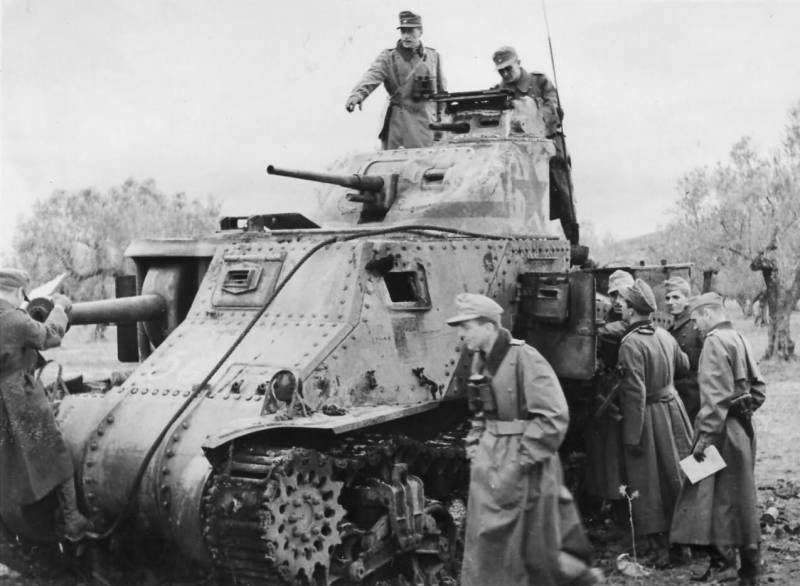
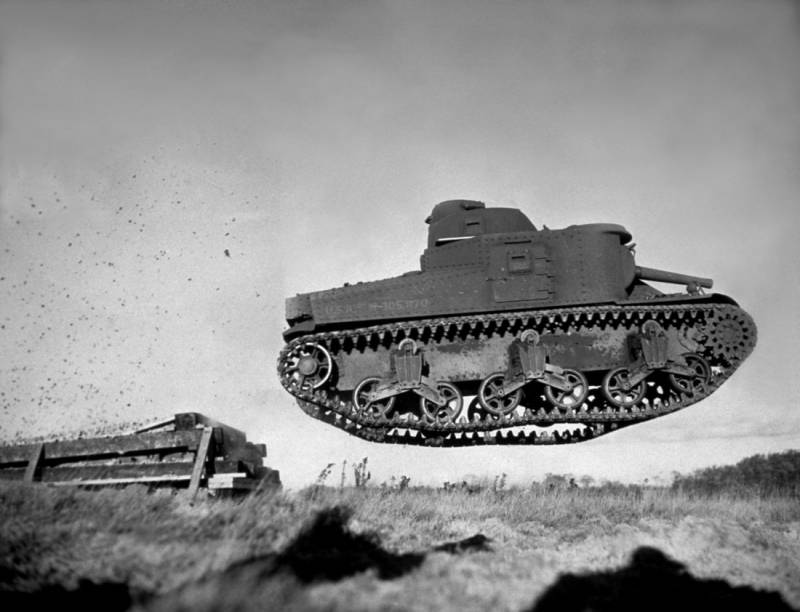
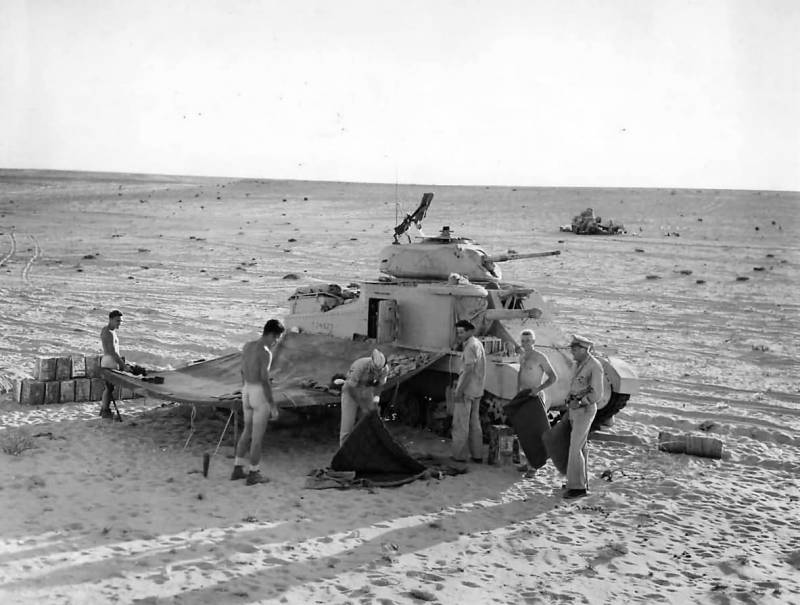
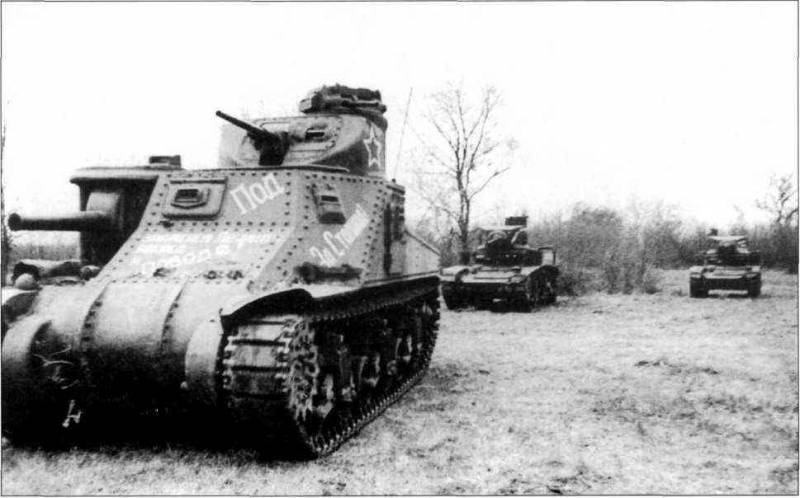
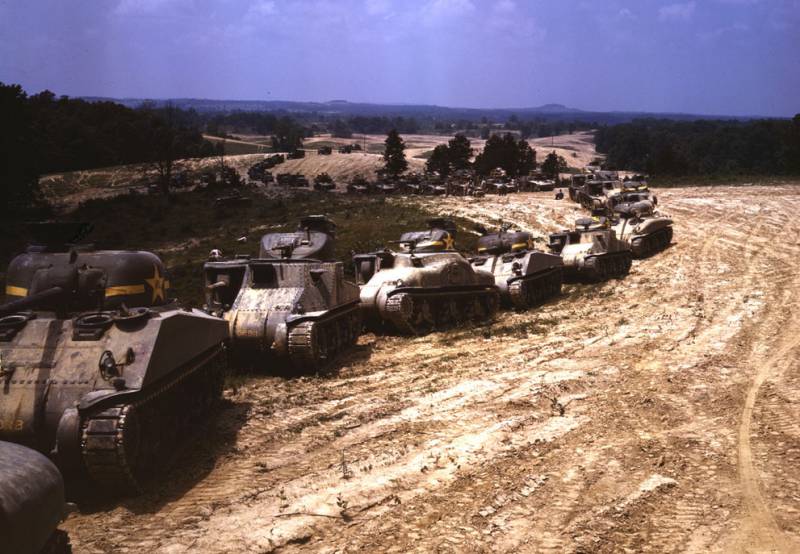
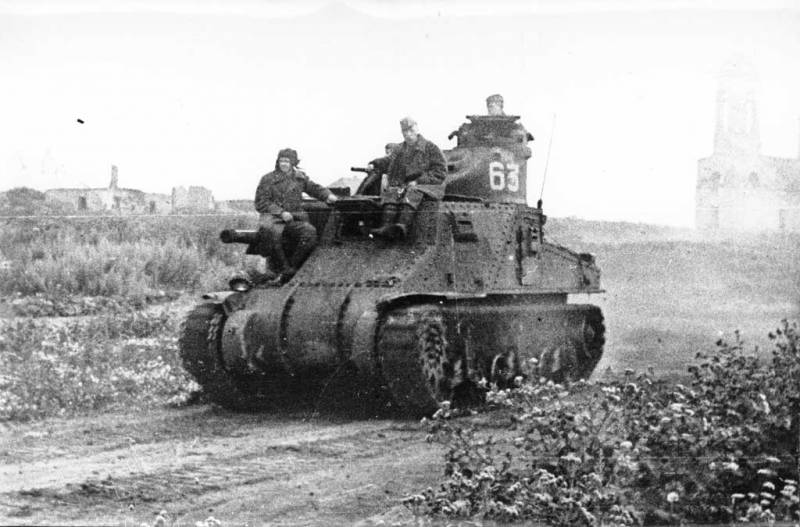
Information